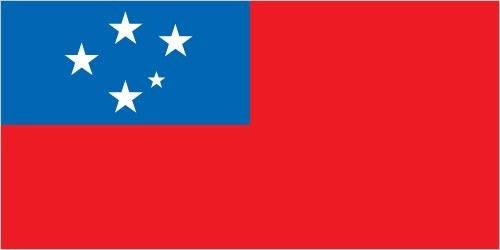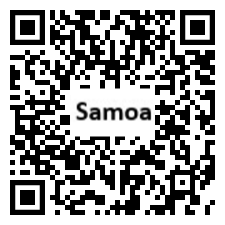Country Summary




Introduction
Background
New Zealand occupied the German protectorate of Western Samoa at the outbreak of World War I in 1914. It continued to administer the islands as a mandate and then as a trust territory until 1962, when the islands became the first Polynesian nation to reestablish independence in the 20th century. The country dropped the "Western" from its name in 1997. In the late 2000s, Samoa began making efforts to more closely align with Australia and New Zealand.
Geography
Area
total: 2,831 sq km
land: 2,821 sq km
water: 10 sq km
Climate
tropical; rainy season (November to April), dry season (May to October)
Natural resources
hardwood forests, fish, hydropower
People and Society
Population
206,179 (2022 est.)
Ethnic groups
Samoan 96%, Samoan/New Zealander 2%, other 1.9% (2011 est.)
Languages
Samoan (Polynesian) (official) 91.1%, Samoan/English 6.7%, English (official) 0.5%, other 0.2%, unspecified 1.6% (2006 est.)
Religions
Protestant 54.9% (Congregationalist 29%, Methodist 12.4%, Assembly of God 6.8%, Seventh Day Adventist 4.4%, other Protestant 2.3%), Roman Catholic 18.8%, Church of Jesus Christ 16.9%, Worship Centre 2.8%, other Christian 3.6%, other 2.9% (includes Baha'i, Muslim), none 0.2% (2016 est.)
Population growth rate
0.63% (2022 est.)
Government
Government type
parliamentary republic
Capital
name: Apia
Executive branch
chief of state: TUIMALEALI'IFANO Va’aletoa Sualauvi II (since 21 July 2017)
head of government: Prime Minister FIAME Naomi Mata’afa (since 24 May 2021)
Legislative branch
description: unicameral Legislative Assembly or Fono (53 seats for 2021-2026 term); members from 51 single-seat constituencies directly elected by simple majority vote, with a minimum 10% representation of women in the Assembly required; members serve 5-year terms)
Economy
Economic overview
ower middle-income Pacific island economy; enormous fishing and agriculture industries; significant remittances; growing offshore financial hub; recently hosted Pacific Games to drive tourism and infrastructure growth
Real GDP (purchasing power parity)
$1.25 billion (2020 est.)
Real GDP per capita
$6,300 (2020 est.)
Agricultural products
coconuts, taro, bananas, yams, tropical fruit, pineapples, mangoes/guavas, papayas, roots/tubers nes, pork
Industries
food processing, building materials, auto parts
Exports
$310 million (2018 est.)
Exports - partners
American Samoa 21%, United States 13%, New Zealand 12%, Australia 10%, Tokelau 6%, Taiwan 5% (2019)
Exports - commodities
refined petroleum, fish, fruit juice, coconut oil, beer (2019)
Imports
$430 million (2018 est.)
Imports - partners
New Zealand 22%, China 16%, Singapore 13%, United States 10%, Australia 9%, South Korea 8%, Fiji 5% (2019)
Imports - commodities
refined petroleum, iron products, poultry meats, cars, insulated wiring (2019)
Exchange rates
tala (SAT) per US dollar -
Page last updated: Friday, May 13, 2022
